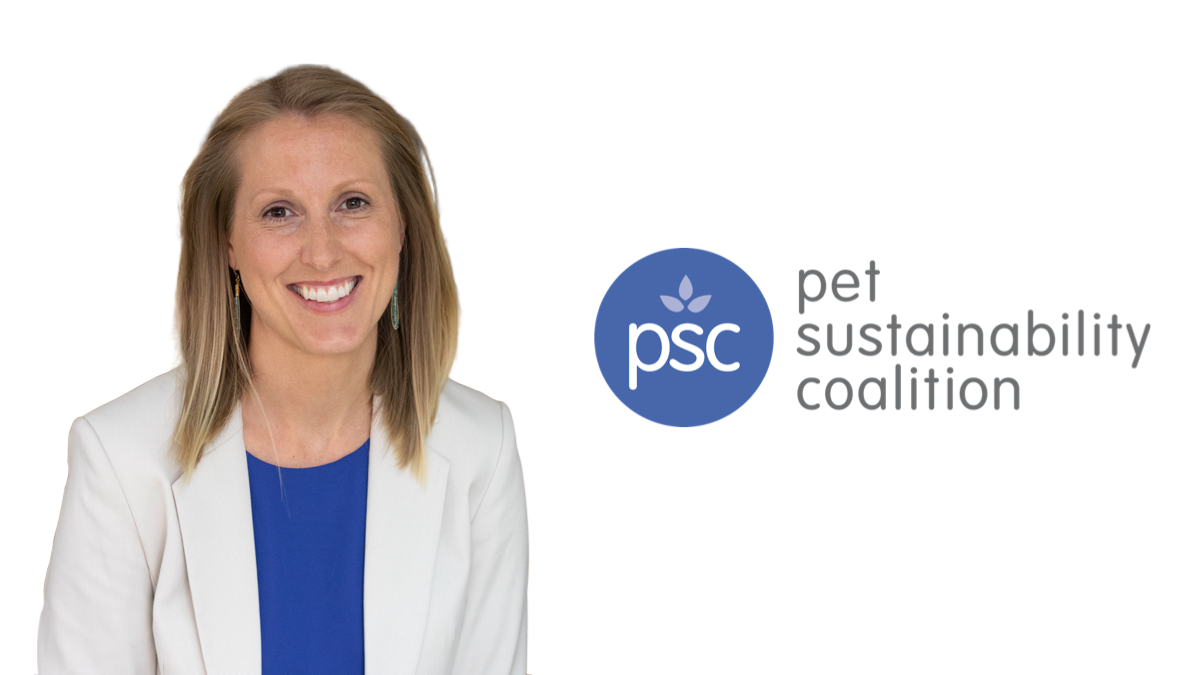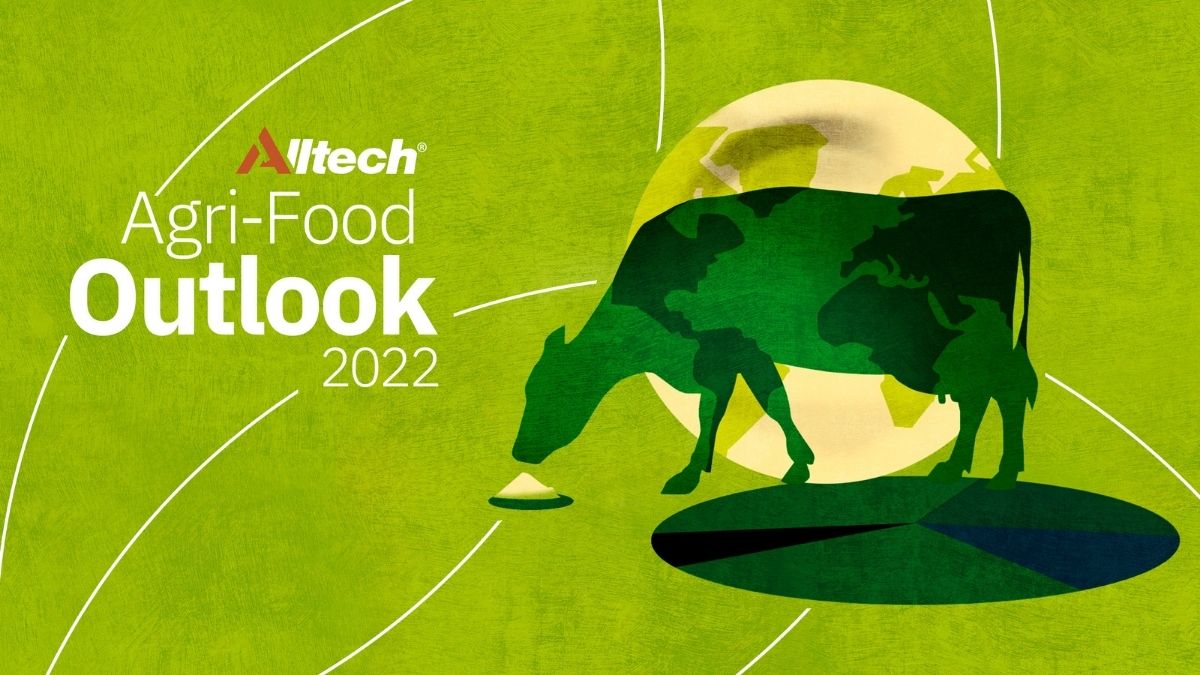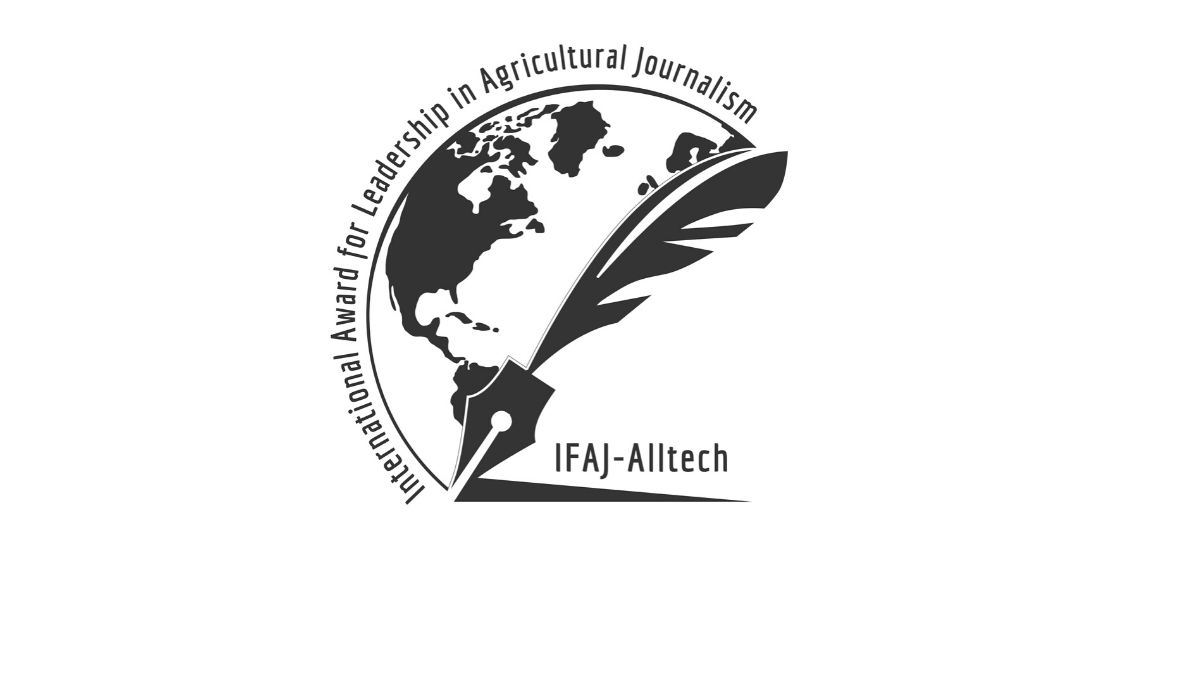VICTOR Pet Food: A science-based approach to pet food
VICTOR Pet Food is looking beyond trendy diets to deliver targeted science-based nutrition. Michael Keith, senior vice president of nutrition and supply chain at Mid America Pet Food, joins the Ag Future podcast to discuss the role pet food plays in the health and happiness of our pets, the importance of gut health and his history with Alltech.
The following is an edited transcript of the Ag Future podcast episode with Michael Keith hosted by Tom Martin. Click below to hear the full audio or listen to the episode on Apple Podcasts or Spotify.
Tom Martin: We’re joined by Michael Keith, senior vice president of nutrition and supply chain at Mid America Pet Food.
Michael is one of sixteen pet food industry professionals holding a professional animal scientist certification in companion animals from the American Registry of Professional Animal Scientists.
His true passion is animal nutrition. And over the last twenty years, he has held numerous positions in the field, working for both manufacturers and industry suppliers.
During his tenure at Mid America Pet Food, the company has seen record growth, launched two new brands into the market, and their VICTOR brand continues to be one of the fastest-growing brands in the pet specialty segment.
Michael, welcome to Ag Future.
Michael Keith: Great. Thanks for having me.
Tom Martin: So, we’re going to talk about VICTOR’s science-based approach to pet nutrition in just a moment. But, first, let’s give our listeners a bit of background for context.
Briefly, if you could, tell us about your own personal experience with livestock.
Michael Keith: Absolutely. I’m a West Texas farm boy, is how most people term me. But I grew up in the small town of Carbon, Texas, which is just kind of east of the Abilene, Texas, area. And I grew up on a farm and ranch, and (we grew and raised) peanuts and beef cattle, and (I was) just kind of submersed in this the whole rural farm town life.
And as we grew up in that, basically, (my) parents one day just said, “Hey, we’ll support you on anything, but peanuts and cattle (is what we do) — (you) need to go to school.” And so, obviously, (the) animal nutrition field was very close to what I grew up (with) and what I would call my childhood interest and passion. And I went to school for that bachelor’s, master’s degree and then got out into the industry, started working my way to the industry.
So, I’ve been involved in the livestock nutrition field, as both on the manufacturer side and on the supplier side, for a little over twenty years now. And truly, I call this industry home. At the end of the day, it’s a very small industry but a very tight-knit community.
Tom Martin: How did your path lead you to Alltech? And if you would, briefly give us a bit of (your) history with Alltech.
Michael Keith: Absolutely. Alltech is a very well-known company in the — on the supplier side of the livestock nutrition field. And so, as I’ve done dairy nutrition and equine nutrition and worked with several different companies, Alltech has historically been a valued supplier.
And then, at one point in my career, I was actually a competitor to Alltech. And then, as I’ve come back full-circle in the industry on the customer side, (the) manufacturing side, (I’m) once again a customer.
And so, I’ve kind of partnered with Alltech and been around Alltech in many different facets of the customer-competitor (side) in the industry. But then, at the end of the day, it’s all about the respect for the product, respect for the science behind the products, and what drives the innovation, from their standpoint. So, we’re proud to use Alltech products and be supported by them in the companion animal industry.
Tom Martin: And your current role with Mid America Pet Food?
Michael Keith: I am senior vice president of supply chain and nutrition. And so, I tend to all of our formulations, all of our product development, and then, I oversee several other departments within our company, such as shipping, (the) logistics team, customer service and procurement.
Tom Martin: Okay. Let’s look at some product lines. If you could, what trends in pet nutrition marketing is VICTOR’s VPRO Blend looking to counter?
Michael Keith: So, VICTOR takes the science-based approach to delivering nutrition; we don’t follow trends or fads. And the VPRO is basically our way of branding that science-based nutrition.
VPRO is included in every bag of the VICTOR kibble (for) dog and cat. At a scientific level — and we have plenty of research that breaks down the benefits, but not everyone has time to really dig that deep and review how it appears in the ingredient deck. And so, with that, we use the VPRO terminology and VPRO insignia just to convey that scientific approach, because we truly believe every ingredient has a purpose, and we want all of our nutrition to be firmly rooted in science.
Tom Martin: All right. Let’s take a look at that information deck for a moment, if we could, and just ask you what VPRO Blend does for our dogs and cats.
Michael Keith: VPRO is a big part of how we deliver on our mission that’s included in all of our formulas, allowing us to deliver a quality product at a scientific level that works with the animal and allows the pet parents to see a difference in the animals.
So, the VPRO Blend itself is a combination of selenium yeast, mineral complexes, prebiotics, probiotics. And so, these are all health benefits — they provide health benefits to the animals, whether that’s skin and coat or we’re looking at cellular regeneration or promoting a strong immune system and just promoting digestive health. (There are) different types of health parameters we’re looking for, and obviously, all of these are backed with scientific research trials.
Tom Martin: Do you offer a feed that’s formulated specifically for sporting dogs? And if you do, what makes it different from the other foods in the VICTOR product line?
Michael Keith: We do. There is, I would say, the basic level of VICTOR. And then, most recently, we launched the VICTOR Realtree sub line, which is specifically formulated for those sporting dogs.
Right now, we have two formulas in that sub line: that’s our Realtree Max-5 Pro and our Energy Edge. And these two products are just more calories and they’re more completely formulated for sporting dogs.
And when we say that, it’s the level of increased nutrients, and then it’s also some of the common additives for high-intensity-use sporting dogs. So, we have supplemental glucosamine chondroitin and — for both, for those formulas. And we just take some of our better products, and then, if we can fine-tune them for just specifically for sporting dogs, that’s what we’ve done by adding some of these other key ingredients to it as well.
Tom Martin: I was online reading about the product and thought this was really interesting: the timing, and why timing is important in feeding hunting or sporting dogs.
Michael Keith: Absolutely. That’s — a lot of people don’t think about this, but when we talk about sporting dogs, timing is very critical when it comes to feeding. And it — the easiest way to relate it to, at the end, of (the) customer is to think about it from the human perspective. And as a human, if we were an athlete — or some of us have children that are athletes — and what we don’t want to do is have our athletes trying to perform on a full stomach.
And so, if we have a sporting dog — and just a good example would be fall hunting season for, say, ducks — if we’ve got dogs or dogs that we’re going to be asking to perform in the morning hours, typically, we would want to feed them at night. That gives us about 12 hours, just (for) the typical digestion time frame.
And so, if we feed them a good meal at night, they’ll digest that all night, they’ll have all those nutrients absorbed to be able to expand in the field, and then, also, they’ll be working on an empty stomach. And so, if you’ve ever tried to run and do a lot of physical activity on a full stomach, it can cause digestive upset; therefore, you don’t have your peak performance.
So, (the) timing of feeding regarding sporting dogs is super critical. And then, obviously, we want them to have a cool-down period and then be able to feed them again.
So, not to say it has to be limited to once a day, but we certainly want to feed the athletes at least 12 hours before their performance period, whether that’s a set performance time at some sort of dog show or training trials or if that’s in the field, on a hunting basis.
Tom Martin: Okay. Let’s say I’m in the store and dog food is on my shopping list. What should I be looking for in a dog food brand where safety and standards are concerned?
Michael Keith: That’s tough to recognize in the store, because most retail stores are all about the presentation and display of the dog foods and trying to appeal to your senses to buy a product.
And so, (the) main thing you want to do is do a little bit of research before you go into the store, and where is the product produced? Are the ingredients locally sourced, or are they internationally sourced? Or are they — all the way down to learning about the manufacturer.
There’s a lot of dog food brands in the industry. There (are) not as many dog food manufacturers. A lot of brands are produced by third-party companies. And we probably manufacture all of our VICTOR products here in Mount Pleasant, Texas. But we also have a lot of food safety certifications to go behind that. So, we’re SQS-certified and Safe Feed/Safe Food-certified. And these are all third-party auditing credentials that we obtained. And so, you just want to know a little bit about the manufacturer of the product and the food safety track record.
You know, accidents do happen. (At) VICTOR, we’ve been fortunate to never have a recall, and we hope to keep it that way. And we try to train our employees and keep improving our processes and procedures to prevent an accident from happening. Any accident can happen at any point in time, but our job is just to minimize the ability for it to happen.
And so, we’re proud to say that we’ve got a very strong food safety record. We have excelled at all of our third-party audits that have happened and just know a little bit about where the product comes from and all the way down to the ingredients.
We talked about locally sourced, and we are able to source (the) majority of our ingredients within a day’s drive here at Mount Pleasant, Texas. And that’s a benefit for us because of the locality, but it’s also a benefit for the consumers, because they can know and trust that these ingredients are top-quality.
Tom Martin: What about my dog’s or cat’s age? Should I be thinking about that when I’m choosing what to feed them?
Michael Keith: You should. Some dogs and cats we can feed their entire life on one product and it not be an issue. But obviously, that’s not the case across the board. We’ll look at — we’ll just go specifically with dogs, but we can extrapolate the same for cats.
A puppy has different needs than an adult dog. And then, as we transition, say, roughly six months, after a puppy is six months old, we usually want to get them on more of an adult diet. And then, obviously, as we get later on into the years of that dog, we also may have to address some senior needs there as well.
So, a lot of dog foods are all life-staged. So, even in VICTOR, a lot of our dog foods, our adult dog foods, can also be used as puppy food, but there’s the specialty ones that are more predominantly just for puppy or just for adult.
But as we get into seniors, we need to be cognizant of, number one, is senior dogs tend to not have the caloric needs that active dogs have. And so, they may need fewer calories. They may need, because of genetic problems or just age-related problems — whether it’s hip dysplasia or just arthritis or hip and joint problems — they may need more glucosamine chondroitin and other-type supplements that our normal, healthy, active dogs don’t need.
So, because of that reason, we typically look at dog food nutrition in three phases: the puppy, the adult, and then the senior categories. And, obviously, there can be some outliers here and there, because every dog is unique in its metabolism and its genetics. And so — but if we look at those three buckets, we can easily say that those are the three type (or) categories of needs we need to look at.
And then, like I mentioned earlier, one dog food could easily last the average dog all the way through its life, and — but sometimes, that’s not the case, and so we would need to look at those three individual buckets separately.
Tom Martin: Well, Michael, we have a question here from our studio dog, Ella. She wants me to ask you this. So, let’s say I’m a dog and you feed me VPRO Blend. What’s going to happen to me?
Michael Keith: At the end of the day, (you will) feel better. And to the human side, to the companion animal owner, you’re going to see it in the dog. And it’s going to be a couple of different ways that it manifests.
Number one, it’s just going to be the overall attitude of the dog and the awareness of the dog. But, most importantly, it’s going to be — you’re going to see it first in the skin and hair coat. And you’ll see it first there because, as the owners, that’s really the only thing we can see. We can see the brightness in their eyes, we can see their overall demeanor, and then the skin and hair coat. And that’s where we see the majority of the issues if a dog has issues.
And the reason we say you’ll see it in the skin and hair coat is because a lot of the ingredients we utilize do have a positive impact on skin and hair coat. But at the end of the day, we take away the typical pest environmental factors of fleas and things of that nature — if we take all that away, what we see on the outside is an outward expression of what’s happening on the inside. And if we’re taking care of the dog’s gut on the inside, we’re going to see that reflected in a healthier skin and coat on the outside.
And so, using our products that have the VPRO Blend in them, that’s where you’re going to see it manifest itself, is on the outside of the animal. Improved skin integrity, improved paw pads — you’ll see the healing of paw pads, wound healing, and a healthier skin and coat, and then, this general overall brightness in the eyes and kind of a brighter attitude.
Tom Martin: You mentioned taking care of the inside. How does VPRO Blend take care of the gut?
Michael Keith: Everything in the VPRO Blend — whether it’s the selenium yeast or the mineral complexes we use or prebiotics and probiotics — are all truly geared to the gut itself. And so, we’re trying to build a healthy animal from the inside out. And so, all these four, (a) combination of products.
You know, we talk — a lot of companies want to talk about gut health, and we talk about prebiotics and probiotics, and we’re very familiar with those from the human standpoint, as we talk about yogurt and supplements and things of that nature. But probiotics are the live, naturally occurring microorganisms that we’re adding into the gut. And then, the prebiotics are nutrients that feed the gut, the microorganisms in the gut. And so, (those are) two different pieces there.
But even when we talk about trace mineral nutrition, it’s all about — we talk about building a better immune response, and we’re doing that from the inside out with the integrity of the gut wall.
And we talked about, you know, skin and coat health. And a lot of people just think about the outward skin and coat health. But when we talk about skin, we’re talking about epithelial tissue. And if we just take a step back and we think about animals in general — whether it’s a cow, a horse, a dog — there’s a lot of epithelial tissue that people don’t think about. And that can be the paw pad on a dog, the hoof on a horse. But also, when we talk about our internal — we talk about “from the inside out,” the lining of all of our intestines and our organs, that’s all epithelial tissue as well. So, it goes deeper than what we typically think about when we first hear “skin”.
And (when) we talk about skin, we’re talking about epithelial tissue and building up that epithelial tissue. And what we actually see through the research is that we can actually thicken the epithelial tissue with the trace — sources of trace minerals that we’re using within our diets.
Tom Martin: What are some things to look for that are red flags that signal that we might not be feeding the right dog food?
Michael Keith: As I’ve mentioned before, what we see on the outside is a good indicator of what’s happening on the inside. If you’re seeing dull, flaky coats, weight problems, lethargy, digestive issues — these are all signs that something’s amiss in our nutrition program.
And it may not be, per se, the dog food itself; it just may be the changing needs of our — of our animals, our pets. And so, as we talked earlier about a senior dog needing something a little bit different than an active dog occasionally, that could be what we’re referring to, is just — the needs of our old pet have changed.
Every once in a while, it can be feed-induced or food source-induced, and maybe (the animals) have developed an allergy, or something’s just not sitting right. But your dog will tell you a lot about what it needs if you just spend time with your dog, and you’ll see these changes manifest find and
If something happens overnight and a dog becomes lethargic or has weight issues — and when we say weight issues, that can be: Is it obese? Obesity in pets is a big problem. But also, is — or is it losing weight? And that may be indicative that we need to make a change. Obviously, if we see skin and hair coat problems, that could be indicative that we need to change as well. And digestive system issues are a little bit trickier, because that’s the thing we want to watch; it’s a trigger point.
But we also have to realize that our (furry) friends tend to get into things that they shouldn’t be getting into. And so, we have to kind of take that in context. Has the dog been out, you know, playing in the yard and maybe eaten something that it shouldn’t have and it’s one-time issue? So, as with anything, we just need to take it into context — but what we see on the outside is the true reflection of what’s happening on the inside.
Tom Martin: Okay. Let’s say that that dog we talked about a moment ago is in my care. What are the benefits to me of feeding him or her VPRO Blend?
Michael Keith: You’re going to have a better health track record. The higher-quality food you’re on containing the VPRO Blend — all these added nutrients that we’re providing, you’re going to have a healthier dog. And with that, you’re going to have better peace of mind; you’re going to have more of those good days at home to share with that animal and just less downtime. And that’s going to come — you’re going to see it as the owner with reduced trips to the vet overall. And certainly, things are going to rise. But it’s all about taking care of the pets that we’re entrusted to feed.
And we look at VICTOR and the VICTOR brand and, yes, we do we feed a lot of performance dogs, and we’re geared towards the hunters and the trainers and everything performance-driven. But it’s not that we’re a performance dog-only company. Because (when) we talk about performance, that manifests itself in a lot of ways. That can be having a litter; that can be playing with our children in the yard and just being that active dog that we crave. And so, there’s lots of ways that performance can be manifested outside of just the sheer hunting or sporting dog activities.
But just having those positive influences — and that’s kind of where we get our tagline. So, the saying for VICTOR is “always by your side.” And your dog is always by your side, (but) we want to be always there by your side as well, as your dog food supplier.
Tom Martin: All right. That’s Michael Keith, senior vice president of nutrition and supply chain of Mid America Pet Food.
Thank you, Michael.
Michael Keith: Thank you.
Tom Martin: And for Ag Future, I’m Tom Martin. Thank you for listening.

Growing up as a self-proclaimed West Texas farm boy, Michael Keith found a way to turn his childhood passion for animal nutrition into a career.


























